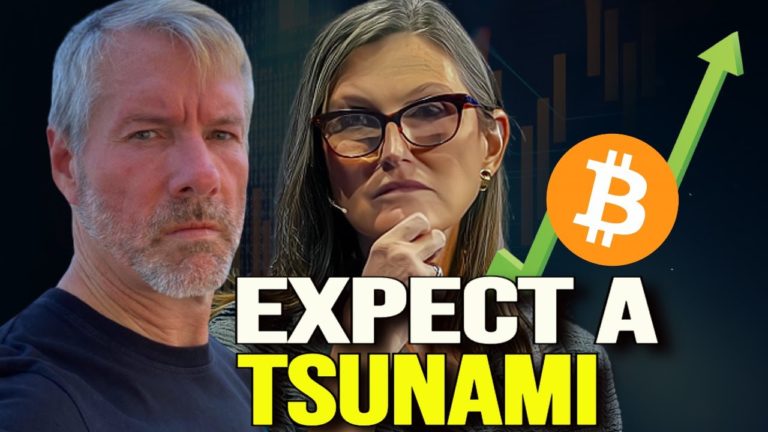The astounding growth of Bitcoin and crypto has turned the cryptocurrency community into its own digital nation. Amazingly, despite such revolutionary growth, the principles of the cypherpunks: such as, our rights to digital privacy and property, our security, and true crypto decentralization, are still resonating strong with crypto newcomers and veterans alike.
The fiat banking regime oversteps its authority, especially in the US, whom surveils our deposits and spending through the BSA (Bank Secrecy Act), AML (anti-money-laundering) and KYC (know-your-customer) rules. And when it comes to these old world order currencies, we know that we’re being bamboozled with inflation, and monetary policies that manipulate our buying power.
And yet, we also know that some cryptocurrencies are scams. Therefore, it’s important to examine cryptocurrency under the same critical microscope as fiat. This is a good practice when “decentralization” is thrown about carelessly, without much respect for the word’s true cypherpunk meaning.
How do we evaluate true crypto decentralization?
Before answering, let premise the discussion that decentralization happens on a scale, a spectrum. Just like a majority owned corporation (where one individual owns most of the company), is much more centralized than a corporation with its largest shareholder owning only 5% of the company, blockchains too have varying degrees of decentralization.
Here are two frameworks to measure decentralization: a) the equitable distribution of the cryptocurrency itself, and b) determining who controls the protocol upon which the blockchain is run.
The Equitable distribution of the cryptocurrency.
Bitcoin, at the start, was highly equitable. A small community mined Bitcoin on their PCs and were able to win Bitcoin as a reward. The expense to mine was minimal.

Miners, by contributing computational power, were able to receive Bitcoin if they solved a cryptographic puzzle of increasing difficulty. At first, anyone with programming knowledge and a computer could receive the reward on their PC as the mining difficultly was low.
Over time, this changed. As the competition for the mining reward heated up, Bitcoin miners had to use expensive graphics cards instead of their PCs mine. This trend of increasing difficulty continued until miners switched to even more costly ASICs to compete for the reward in Bitcoin. And now, you need an entire farm of these expensive ASIC miners for a chance at earning money, which costs hundreds of thousands of dollars.
Thus, mining power is more concentrated and centralized than ever and is now done mainly by corporations. In this respect, the equitable distribution of wealth by way of Bitcoin is no longer equitable. Mining is controlled only by those who can afford to mine.
But this isn’t the full story. People can still take part in mining pools and earn Bitcoin as a reward, or they could simply buy into the companies that mine Bitcoin and other cryptos. And even though it is costly when it comes to mining Bitcoin directly, direct mining only gives you access to limited additional powers on the network (more on this later).
On a side note, there are alternative cryptocurrencies such as Qortal that use minting instead of mining to ensure that everyone gets a fair share in earning the reward. Ravencoin, another alt coin which was hard forked from Bitcoin, was restructured from the Bitcoin protocol to distribute the reward share more evenly.
The equitable distribution of the reward share described above is the first component of decentralization. The main factor in the decentralization of blockchains is determined by who controls the protocol. And if the blockchain protocol is not in hands of the community (we the people), then the cryptocurrency itself is not truly decentralized.
Those who control the protocol, control the blockchain.
The protocol is the nuts and bolts that make cryptocurrencies what they are. The cryptographic algorithms, the 21 million supply cap of Bitcoin, and the reward distribution (all of this) is built into the base layer of the Bitcoin protocol. When you hear that Bitcoin has its own monetary policy built into it, it is by way of the protocol. The same goes for the “un-hackable code” of Bitcoin, or the notion that Bitcoin is a currency driven by mathematics.
Thus, if the Bitcoin protocol was only in the hands of a few individuals… it would not be decentralized.

What makes Bitcoin a cryptocurrency for the people, is because the full node operators control the Bitcoin protocol. And anyone can be a full node operator at little cost—this is the democratization of the Bitcoin, so to speak.
Hard forks, which enable major changes to the protocol, need consensus among the full node operators to happen. And as hard forks can drastically change the protocol, Bitcoin was designed in such a way to make hard forks unlikely without an overwhelming consensus.
For an in-depth analysis of forks, check out: crypto forks and 51% attacks explained.
If full node operators control the protocol, then why is it that direct miners have additional power over the blockchain?
We had discussed how taking part in a mining pool, and not mining directly, gives up some power over the blockchain (the more people directly controlling the blockchain, the more it is decentralized). This is because mining directly gives miners the ability to execute soft forks through consensus.
Soft forks are like adding a specialized item to a menu (as said by Andreas Antonopoulos), without changing the menu itself. Simply put, soft forks can add features within the protocol, while the protocol’s primary features remain in tack.
Thus, the more miners there are to support a soft fork update, the more integrated the fork becomes into the Bitcoin network.
The lightning network is an example of what is possible through a soft fork. Through the SegWit soft fork, Bitcoin wallet providers were able to introduce the lightning network protocol. This did not change the fundamental structure of Bitcoin, but has allowed for speedy off-chain transactions, which is helping Bitcoin to scale.
Why is decentralization so important?
The hegemony of power collects at the center. The Big Tech Technocracy (Microsoft, Amazon, Google and Facebook) have control over their protocol, which is purposed for the benefit of shareholder profit.
Facebook and Google, for example, have algorithms in place which help them understand you even better than even your spouse can, as discussed by Yuval Noah Harari.
These Big Tech Technocratic death stars are magnets of power, and the entire internet is now controlled by the services these corporations offer. Our senses are thus enslaved within their sticky web apps and videos. And our own decision making is undermined by calculated, spoon fed advertisements, which are custom designed to set off your own personal, internal triggers. They provide the stimulus for our predicted responses, which in many cases is a sale.
Also, Central Banks and the fiat currencies they support, surreptitiously strive for their own currencies’ dominance. This creates an unfortunate competitive dynamic between nations, which results in war. For example, a weapon in the US and China trade war is the manipulation of their own currencies. By devaluing currency, nations can gain an edge in the pricing power of imports and exports, thereby deteriorating the value of our money.
Is crypto our only hope?
The decentralized internet being built on crypto’s backbone will be controlled by us instead of centralized banks and the internet technocracy. True crypto decentralization will leave no room for manipulation by central banks and the Big Tech Technocracy.
Decentralized crypto is borderless and open sourced, with the protocol updates in our hands instead of central powers.
True Crypto Decentralization means that there are no central powers or corporations collating and profiting off our data.
Since decentralized crypto blockchains are essentially networks owned by us, through crypto, we have the chance to reclaim power that is rightfully ours. Such as, our financial privacy and sovereignty, our digital experiences, or the freedom to use search engines and interact on social media without surveillance. Decentralized crypto blockchains will enable us to do these daily activities without our every keystroke, photo, and email being examined, uploaded, and stored on some database… where it is then resold on the internet advertising superhighway like fodder.
How do we measure how decentralized a blockchain is?
As stated earlier, decentralization falls on a scale. We must measure crypto projects to determine where they fit on the decentralization spectrum. We’ll use Ethereum as an example in such an analysis.

First, does Ethereum equitability distribute its wealth?
As Ethereum moves from proof-of-work to proof-of-stake (Ethereum 2.0), Ethereum is becoming much more centralized in terms of the equitable distribution of wealth. To reap the staking reward, which is much like interest on your crypto, you can become an Ethereum validator by staking at least 32 Ethereum, which is the equivalent of $112,000 today. In this respect, Ethereum is low on the spectrum of wealth decentralization, as its network operations are in the hands of the wealthy few who can afford to stake $112,000.
Like Bitcoin, however, with Ethereum you can become part of a staking pool and still take part indirectly with the staking reward (though there will be a fee provided to the staking pool).
Does the community control the Ethereum protocol?
Unlike Bitcoin, there is a key difference when it comes to control over the protocol, the staking validators are the only ones that can implement changes to the protocol.
And as such, Bitcoin is much more decentralized than Ethereum. Here’s why:
In Bitcoin, anyone can be a full node operator and validate transactions with little cost. And as discussed prior, the full node operators can be anyone, which democratizes the control of the protocol updates. In Ethereum, you must be a wealthy validator to implement any protocol changes.
Ethereum, therefore, is less decentralized than Bitcoin. But this doesn’t mean Ethereum is centralized. Compared to the Big Tech Technocracy consisting of Facebook, Microsoft, and Google, Ethereum is much more decentralized. Unlike these giants, Ethereum is not controlled by billionaire shareholders or wealthy executes. The Ethereum community collectively decides on protocol updates, and the validators must agree on the changes before being implementation.
This is important, because cypherpunks idealists and Bitcoin maximalists are often quick to attack other blockchains or protocols based on being “centralized”. But when you compare the Ethereum network to the invasive tactics of Facebook, Google, and Microsoft—you realize that power is much more equitably distributed through Ethereum, as opposed to the Big Tech Technocracy. And as cryptocurrency is still in its early innings, when blockchains support and assist one another, their combined forces are taking on old-world centralized regimes.
This does not mean one should blindly jump into any blockchain. There are scam coins out there with little community involvement, which were designed to solely to make its founders wealthy. By joining in a specific cryptocurrencies community’s discord server, you can get a sense of the development team and the cypherpunks principles behind individual projects.
Also, when evaluating a cryptocurrency, the developers of some smaller projects may have retained control of the protocol in its early stages. This makes it easier for the developers to work out bugs in its formative stages (even Satoshi Nakamoto had a community to bounce ideas off and develop the Bitcoin protocol through). This may pose additional risks, and such cryptocurrencies should be monitored closely, but so long as the project’s roadmap is to put the protocol fully into the hands of the community, it may be a risk worth taking.
As far as the larger projects go, there is plenty of published information to apply the following questions to the project as a way to measure their level of decentralization:
- How well is the reward share equitably distributed?
- Who controls the protocol?
Lastly, I would like to point to the macro trend that I believe all crypto will be moving toward. The best protocols will win. Here’s why:
Even ERC 20 tokens (tokens built on the Ethereum network), can develop their own main nets or migrate to other networks. If other protocols emerge, which are more decentralized, and more equitable in their distribution of the reward share, ERC tokens can bridge to those other networks. Blockchains, Ethereum included, will thus be racing to become the most decentralized, secure, and equitable platforms as people will only opt for true crypto decentralization. And as blockchains are becoming the base layer of a more secure internet, the immensity of emerging decentralized networks cannot be understated.
Therefore, as crypto progresses, the blockchains that have centralized protocols will have to give up their centralizing characteristics to remain viable. It’s a race toward crypto Democracy, so to speak, and only the chains that are for the people will survive.
For more in-depth analysis and detailed explanations, check out our crypto education section.






